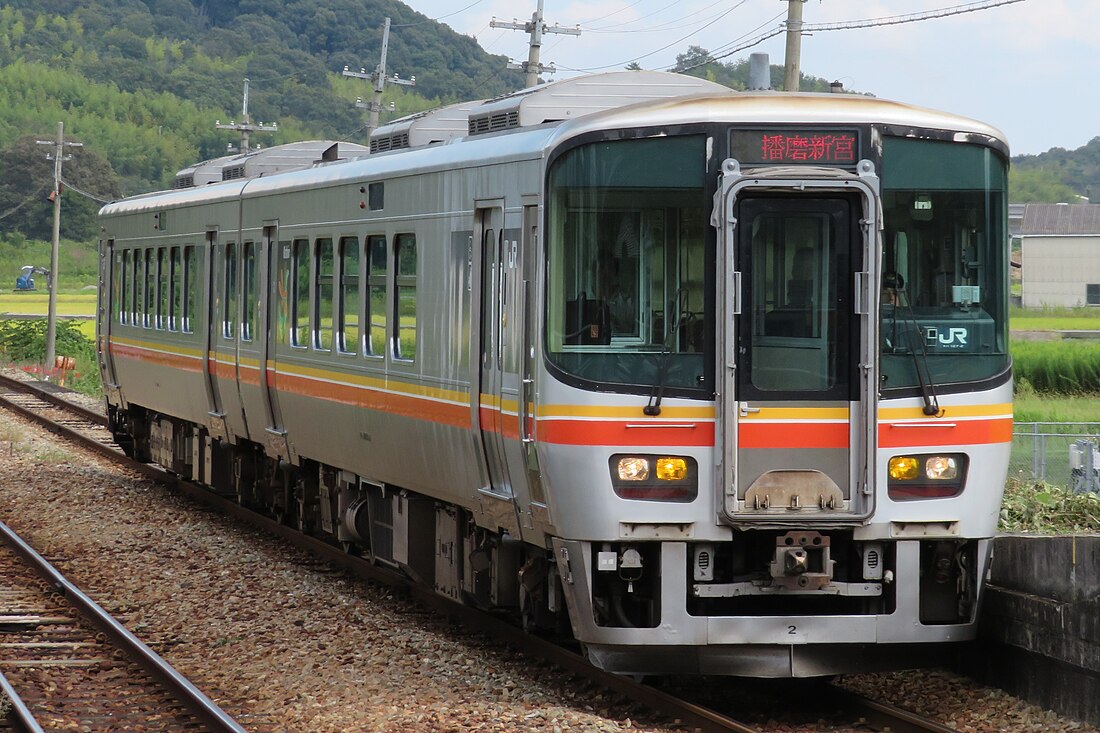Top Qs
Timeline
Chat
Perspective
KiHa 122 series
Japanese train type From Wikipedia, the free encyclopedia
Remove ads
The KiHa 122 series (キハ122系, Kiha-122-kei) and KiHa 127 series (キハ127系, Kiha-127-kei) are diesel multiple unit (DMU) train types operated by West Japan Railway Company (JR-West) on the Kishin Line between Himeji and Kōzuki. A total of 19 cars have been delivered, formed as seven single-car KiHa 122 series units and six two-car KiHa 127 series units.[2] Test-running commenced in late September 2008,[4] with the units entering revenue-earning service from the start of the revised timetable on 14 March 2009.[5]
Remove ads
Exterior
The body design features improved crash resistance, based on the 223 series electric multiple unit design. The cars use environmentally-friendly diesel engines with reduced NOx and particulate emissions.[6]
Externally, the units are finished in unpainted metal with thin yellow and red waistline stripes.[4]
- WTR248 trailer bogie
Interior
Internally, the cars feature flip-over reversible seating arranged 2+1 abreast. Toilets in both types of train are wheelchair-accessible, and the step between the passenger compartment and station platform has been eliminated.[6]
- KiHa 127 interior
- KiHa 127 forward view showing LED fare board for wanman driver-only operation
- KiHa 127 toilet
Formations
The KiHa 122 single-car units and KiHa 127 two-car units are formed as follows.[7]
KiHa 122 series (single-car unit)
The KiHa 122 series uses a diesel engine with a small lithium-ion battery (18 kWh) that is used to power auxiliary machines in the train.[8]

(Equipped with toilet)
KiHa 127 series (2-car units)
(KiHa 127-0 is equipped with a toilet.)
Derivatives
- ET122, single-car DMUs for use on the third-sector Echigo Tokimeki Railway Nihonkai Hisui Line since March 2015
References
External links
Wikiwand - on
Seamless Wikipedia browsing. On steroids.
Remove ads





